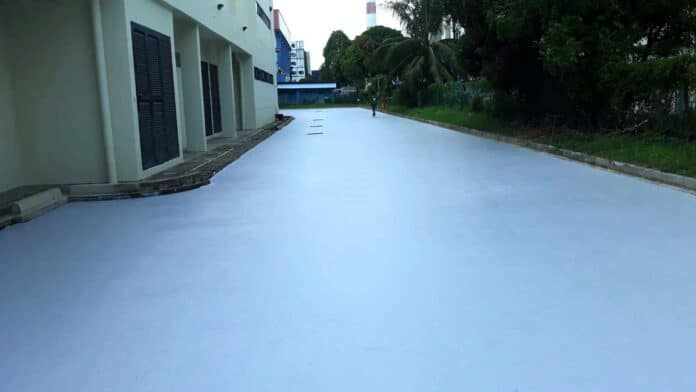Additives in cool paint coatings reflect solar heat, assisting in the reduction of surface heat emission and absorption. These coatings are a workable way to lessen the impact of urban heat islands (UHIs). The term “urban heat island” (UHI) describes the phenomenon wherein temperatures in metropolitan areas are often higher than in surrounding regions.
Until now, most studies of cool paint coatings have been either simulation-based or tested in scaled-down models and understanding their application in real-world scenarios is limited.
Using cool paint coatings in cities can make walkers feel up to 1.5 degrees Celsius colder, according to a study by NTU Singapore researchers. This increases the comfort level for work and leisure activities in metropolitan settings.
This is the first real-world study in the tropics to comprehensively evaluate how well cool paint coatings reduce city heat.
Scientists coated the roofs, walls, and road pavements of an industrial area in Singapore with cool paint coatings.
The results showed that the pedestrian’s thermal comfort level improved by up to 1.5 degrees Celsius in the coated environment compared to the adjacent uncoated area. The pedestrian thermal comfort level is measured using the Universal Thermal Climate Index, a common international standard for human outdoor temperature perception that considers temperature, relative humidity, thermal radiation, and wind speed.
Lead author Dr. E V S Kiran Kumar Donthu, who completed the work as a Research Fellow at the Energy Research Institute, said, “Our study provides evidence that cool paint coatings reduce heat build-up and contribute to the cooling of the urban environment. This is a minimally intrusive solution for urban cooling that has an immediate effect compared to other options that often require major urban redevelopment to deploy. Moreover, by reducing the amount of heat absorbed in urban structures, we also reduce heat load in buildings, consequently reducing indoor air-conditioning energy consumption.”
Lead investigator Associate Professor Wan Man Pun at the NTU School of Mechanical & Aerospace Engineering (MAE) said, “The study’s findings are relevant not just for cities in Singapore, where it is hot all year round, but for other urban areas worldwide, too. With global warming, people will increasingly look for ways to stay cool. Our study validates how cool paint coatings can be a strategy to reduce the urban heat island effect in the future.”
The NTU researchers selected four rectangular buildings that created two parallel “street canyons” in an industrial park west of Singapore to use as the site of their real-world trials. These canyons were made up of small, building-bordered streets. The walls, rooftops, and road pavement of one canyon dubbed the “cool canyon” were painted in cool colors. To act as a reference for comparison, the other canyon—the “conventional” canyon—stayed unaltered.
The excellent paint coats contributed significantly to the incredible canyon’s lower air temperature. During the day, the coated surfaces retained less heat because they reflected more sunlight and absorbed less heat. This helped to keep the surrounding air and structures cooler by preventing the emission of excess heat.
Compared to ordinary roofs, roofs coated with excellent paint absorbed up to 40% less heat and reflected 50% more sunshine. Furthermore, the coated walls contributed to the drop in temperature, successfully preventing the majority of heat from entering the industrial buildings.
Journal Reference:
- E. V. S. Kiran Kumar Donthu, Yong Ping Long, Man Pun Wan, Mandi Zhou, Bing Feng Ng. Dynamics of cool surface performance on urban microclimate: A full-scale experimental study in Singapore. Sustainable Cities and Society, 2024; 102: 105218 DOI: 10.1016/j.scs.2024.105218
